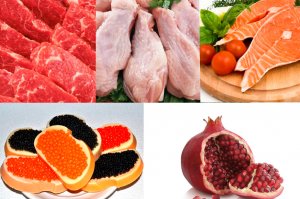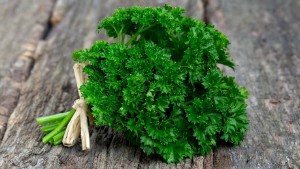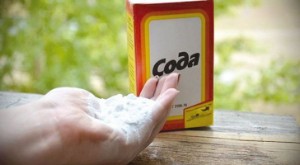Features of a diet with elevated hemoglobin in the blood — what is possible and what is not?
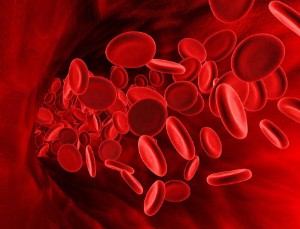 A high level of hemoglobin in the blood significantly increases the viscosity of the blood, increases the likelihood of its coagulation, which causes blood clots to form, as well as increases the load on the internal walls of blood vessels (from which they subsequently lose tone and deform).
A high level of hemoglobin in the blood significantly increases the viscosity of the blood, increases the likelihood of its coagulation, which causes blood clots to form, as well as increases the load on the internal walls of blood vessels (from which they subsequently lose tone and deform).
What do doctors recommend to do with elevated hemoglobin? First of all, it is necessary to adjust your diet, include products that help normalize the concentration of shaped blood elements, as well as slow down the synthesis of new hemoglobin molecules.
What kind of diet should you follow for this? Which foods should be added to the diet, and which ones should be completely excluded?
Recall that we have already cited List of 7 products to reduce hemoglobin .
Content
How does the diet affect hemoglobin?
According to research , hemoglobin levels are actively increased by eating foods rich in:
- Iron;
- Vitamins A, C, E, B-groups;
- Omega-3 unsaturated fatty acids (as well as omega-6 and omega-9).
Accordingly, they should be excluded from the diet whenever possible (not completely, consuming a minimum amount purely to maintain the correct balance of nutrients in the body).
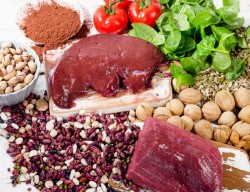 The hemoglobin molecule consists of protein (globin) and iron. The process of their connection is stimulated by the above-mentioned vitamins and micronutrients.
The hemoglobin molecule consists of protein (globin) and iron. The process of their connection is stimulated by the above-mentioned vitamins and micronutrients.
Even if you consume non–iron-rich foods, but at the same time there will be a deficiency of vitamins in the body - the bioavailability of iron will be reduced to a minimum. That is, it simply will not be absorbed in the proper amount.
In which cases does high hemoglobin occur most often? If the patient's diet is dominated by:
- Animal products ( meat , meat offal);
- Seafood;
- Citrus fruits;
- Chocolate (and other desserts that contain cocoa in large quantities).
Recall that in the last article we considered 20 products , raising hemoglobin .
At the same time, in such patients, the amount of plant foods rich in fiber in the diet is minimal.
How to reduce it in men?
Men traditionally have a slightly faster metabolism than women. Often, increased hemoglobin is a consequence of a violation of the water-salt balance.
 It's extremely easy to fix this – you need to drink more
, you can also include in the diet
honey
(this is the richest product in mineral trace elements, which just help to normalize the water-salt balance).
It's extremely easy to fix this – you need to drink more
, you can also include in the diet
honey
(this is the richest product in mineral trace elements, which just help to normalize the water-salt balance).
It should also be noted that a whole range of metabolic processes in the body of men is regulated by testosterone (sex hormone). With its deficiency in the blood, metabolism slows down comprehensively, glucose is actively transformed into fatty compounds, protein breakdown is also slowed down.
How to normalize testosterone levels? Doctors recommend including aphrodisiac foods in the diet. These include many spices, as well as garden greens. But alcohol should be completely abandoned for the period of treatment, especially it is important not to drink red wine - this drink dramatically raises the level of hemoglobin in the blood.
It is also important to sharply limit consumption fish and seafood that increase hemoglobin . The body should get proteins from lean meats, the best option is chicken breast, since it contains a minimum of fat, iron is also much less than in pork or beef.
Men are also recommended comprehensively reduce the amount of calories consumed daily and adhere to the indicator of 1.5 – 2 thousand kilocalories per day (with an average norm of 3000 kilocalories). This will help reduce the load on the gastrointestinal tract, accelerate the digestion of foods rich in complex carbohydrates. Thus, the body will receive a sufficient amount of energy, but the assimilation of protein foods (it is in such products that there is more iron) will slow down.
Another feature of the diet for men is a full–fledged varied diet. It is important to eat at least 4-6 times a day, in small portions. This will also help Normalize blood viscosity , bring the hemoglobin balance back to normal.
Physical activity, as well as vitamin D (stimulates the accumulation of calcium in some tissues), help to offset the age-related decrease in testosterone. Therefore, it is most effective at this age to simply walk outdoors and sunbathe as often as possible. The body does not receive as much vitamin D from food as in epithelial cells when exposed to ultraviolet light.
How to lower it in women?
The need of the female body for iron and B-group vitamins is higher than that of the male. Therefore, strict restriction of meat dishes is strictly contraindicated.
 Doctors recommend giving preference fermented milk products that reduce hemoglobin
- they contain calcium, which best reduces the bioavailability of iron and allows you to normalize the balance of hemoglobin in the blood.
Doctors recommend giving preference fermented milk products that reduce hemoglobin
- they contain calcium, which best reduces the bioavailability of iron and allows you to normalize the balance of hemoglobin in the blood.
The most calcium is found in goat's milk, cottage cheese, fatty sour cream, kefir, fermented baked milk.
Physical activity is also extremely important for women – it accelerates metabolism, normalizes the biochemical composition of the blood, and also helps to normalize the hormonal background, which also indirectly affects the production of hemoglobin.
Women should also include the following foods in their diet:
- Cereal cereals;
- Muffins and flour (in moderation, may exacerbate the symptoms of toxicosis in the early stages of pregnancy);
- Green vegetables and fruits .
But you should give up fish, nuts, natural chocolate (it is better to give preference to white or milk).
Doctors also recommend that women temporarily increase the amount of sweets consumed (ideally, there are desserts based on fermented dairy products). But do not abuse it – excess glucose in the blood increases blood viscosity exponentially.
6 permitted products
Nutritionists recommend including calcium-rich foods in the diet to reduce hemoglobin as quickly as possible. It should be included in the diet:

- Hard cheese. Parmesan is the most useful – 100 grams of this cheese contains 1200 mg of calcium. However, if you eat it in large quantities, then there is a high probability of getting gastrointestinal irritation.
- Condensed whole milk. Is only slightly inferior to cheeses in terms of calcium concentration. It is also a source of easily digestible glucose. But it is worth remembering that condensed milk is a rather "heavy" product for the stomach, has a choleretic effect, which can even cause heartburn or even exacerbation of gastritis.
- Milk. It contains the most calcium. By the way, there is almost 2 times more of it in goat's milk than in cow's milk. Therefore, it is fermented milk products that reduce hemoglobin the fastest.
- Persimmon. About 120 mg of calcium per 100 grams of this fruit. And it also contains a huge amount of fiber, which helps to normalize the work of the gastrointestinal tract, as well as the water-salt balance in the body. Persimmon is also recommended for chronic constipation.
- Boiled shrimp. They have slightly less calcium than persimmons. But they help to normalize the balance of cholesterol in the blood, reduce the likelihood of blood clots and cholesterol plaques.
- Chicken eggs. Only it is necessary to consume protein, not yolk ( it contains a large amount of iron ). It is better to have it boiled or fresh, rather than fried.
8 prohibited products
The following products contribute to an increase in hemoglobin:
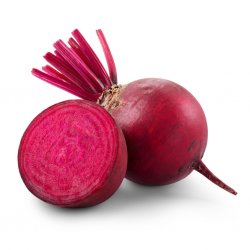
- Pork, beef, rabbit. Almost all meat products are rich in B-group vitamins, essential amino acids, and iron, which is just necessary for the production of hemoglobin. It is better to replace all of them with dairy products or low–fat meat (poultry is an ideal option).
- Beetroot. Is rich in vitamins E, B-groups and iron. Moreover, all these nutrients are preserved even during thermal cooking, so beets should not be consumed in any form.
- Apples. Among the fruits – the richest in iron and ascorbic acid. If there are apples, then preference should be given to sour varieties – they have less iron than sweet ones.
- Red wine. This is the only alcohol that significantly increases hemoglobin. And at the same time, it increases blood viscosity, which directly also increases the risk of blood clots and cholesterol plaques. But with low hemoglobin, drinking only 50-75 milliliters of red wine per day helps to normalize the balance of iron in the blood in just 4-5 days.
- Seafood. Rich in iron, iodine, B-group vitamins and unsaturated fatty acids (including omega-3 and omega-6). Especially "dangerous" are fatty fish varieties, as well as red and black caviar. If the hemoglobin level is inadequate, they should definitely be abandoned.
- Legumes. Rich in omega-3 and iron. This can also include peas and beans. These trace elements are preserved in legumes both during heat treatment and drying.
- Buckwheat. Among cereals – buckwheat is the only one that increases hemoglobin due to its high iron content. It is worth minimizing its use or preparing milk porridge.
- Citrus fruits. Among exotic fruits, they contain the highest concentration of ascorbic acid, which increases the bioavailability of iron. Instead of citrus fruits, it is better to give preference to green fruits and vegetables (with the exception of apples and legumes).
It is worth considering that the need for hemoglobin in children preschool age – less than adults. Therefore, an increased level of iron in the blood is more dangerous for them. Accordingly, it is necessary to follow the above recommendations for them. And if you have any questions, you can consult with a pediatrician.
Folk remedies
Among the folk methods of treatment that are really effective (and recommended by the doctors themselves) are:

- Mummies with water. It is prepared simply: 0.5 grams of mummy are added to 1 cup of water (or 1 tablet if used in this form). Drink on an empty stomach. This helps to normalize the water-salt balance, reduce blood viscosity, and accelerate the absorption of calcium.
- Infusion based on burdock root. Also affects the water-salt balance, slows down metabolism. To prepare such a decoction, mix 150 grams of fresh grated burdock roots with 1 liter of boiling water, insist until completely cooled. Take 100 milliliters 4 times a day before each scheduled meal.
- Tincture of horsetail. Has a strong diuretic effect, reduces the concentration of sodium in the blood, normalizes the metabolic rate. Dried pagons of the plant are used for cooking. 30 grams of these are poured with a glass of boiling water, infused for 2 hours, drunk in one gulp. The course of treatment is no more than 7 days, then a mandatory break is made for 5-10 days (to minimize the load on the urethra).
- Tincture based on aloe. Is prepared as follows: 35 grams of aloe pulp (without needles) is poured with 200 milliliters of strong alcohol (preferably moonshine or alcohol). Insist for 1 week in a dark place at room temperature. Take 4-6 drops 3 times a day after meals. You can replace aloe with agave – the biochemical composition of these indoor flowers is almost identical.
- Calendula tincture. Ready-made can be purchased at almost any pharmacy. But you can also cook it yourself at home. It will take 15 grams of dry calendula base and 150 milliliters of vodka. Insist for only 2 days, consume 1 teaspoon 2 times a day (after breakfast and dinner).
- Tincture of cloves. Although this is an extremely bitter remedy, it helps to quickly reduce the bioavailability of iron. To prepare the tincture, mix 8 dried clove inflorescences and 50 milliliters of vodka. Insist for 3 days. Take 5 drops 3 times a day. The main thing is not to overeat and not to drink. It is better to abstain from food and drink for the next 1.5 hours after using the remedy.
Other methods
In the event that all of the above methods of treatment have not brought the desired effect, doctors prescribe drug therapy. Main recommendations:

- Taking calcium-based medications (calcium chloride) in therapeutic doses. The course of treatment can be 3 weeks, followed by a mandatory break.
- Refusal of multivitamin complexes. It is also necessary to abandon drugs that contain B-group vitamins in therapeutic dosages.
- In critical cases, hospitalization is prescribed. At the same time, sodium chloride–based droppers are used, as well as saline solution - they help to reduce the concentration of the same iron in the blood, provide the body with all micronutrients, accelerate the elimination of toxins (which actively accumulate with excessive hemoglobin).
In hospital treatment, the main task for doctors is to determine the exact cause of a sharp increase in hemoglobin. And, if possible, eliminate this factor completely. Unfortunately, quite often, chronic diseases of the endocrine system lead to an increase in hemoglobin, which cannot be completely eliminated. In order to normalize the patient's condition, he will have to constantly adhere to the above recommendations in terms of diet.
Also for rapid hemoglobin reduction doctors can prescribe Rehydrone is the safest method of normalizing the water-salt balance. In fact, this drug is a set of minerals and salts, the level of which decreases when increasing blood viscosity .
Take Rehydrone for at least 4 days in small doses (up to 2 sachets per day in the form of a ready-made solution). But it is worth considering that taking Rehydrone in therapeutic doses can provoke dysfunction of the urethra, inflammation of the ureters (if there were stones and sand in the kidneys) and also cause symptoms of toxicosis (due to excess sodium, which acts as a toxin in excess, and also reduces the level of potassium in the blood).
Interesting video
And now we invite you to familiarize yourself with the video:
;
Conclusion
In total, excessive hemoglobin levels can provoke an exacerbation of many chronic diseases of the cardiovascular system. But in most cases, it is possible to normalize its level by adjusting the diet. The main rules of the diet are the use of fermented dairy products and any other products that contain a large amount of calcium.
At the same time, it is necessary to abandon those products that contain iron, omega-3 acids, B-group vitamins, which increase the bioavailability of iron, accelerate biochemical processes with its use.
